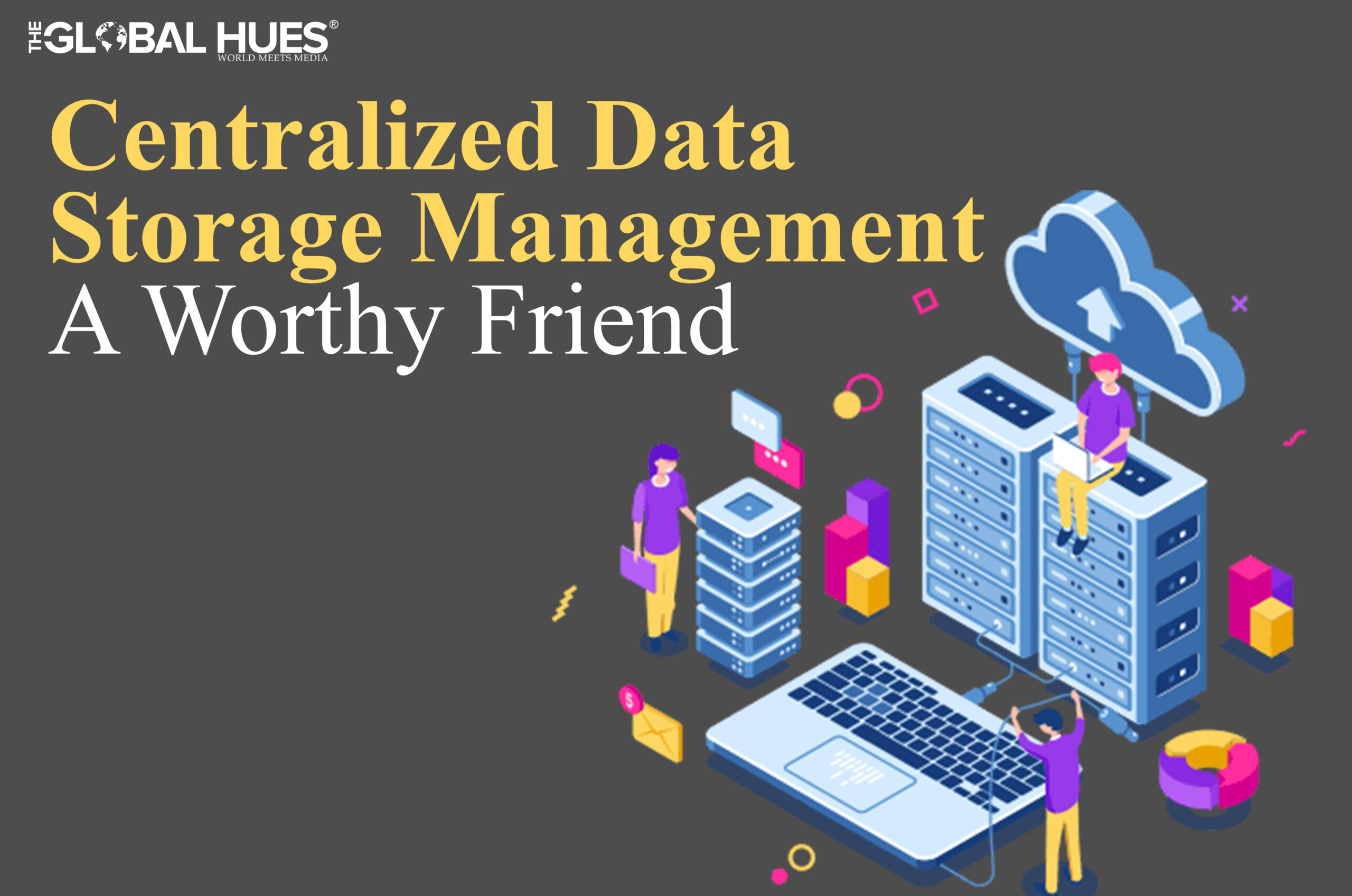“Centralized IT structures promise tighter control on data management, security, and a consistent set of data”
CDSM & Its Effectiveness
Centralized Data Storage Management or CDSM is defined as the ability to manage a holistic workload, using a single software and a Centralized Management Interface. The CDSM serves as a storage of a wide range of file-level or unstructured data, structured or block-level data, Cloud or Object Level data.
To cut short, CDSM is the ability to manage SAN, NAS, hyper-converged, and unified storage resources utilizing a single software solution. CDSM is specifically the management and not the storage itself. Hence, it is not synonymous with Centralized Databases or Centralized data storage solutions.
To understand the utilization of CDSM, it simplifies the storage experience for enterprise users, we must keep in mind that while using a single purpose-built storage solution, the dedicated software is all we need. There is no need of a plethora of tools to manage this one type of storage either on-premises, off-site, or in the cloud. One tool is good enough. Currently, maximum businesses aren’t dealing with a single type of data. Therefore, they certainly can’t use a single-purpose-built storage solution.
Given that it’s a data-driven enterprise relying on data-driven decisions, they probably have SAN system for different types of databases and a NAS system for file storage. The contemporary age is the age of Hyperconverged Infrastructure (HCI) which most likely uses a hyper-converged appliance as a part of data center. Hence, along with legacy solutions, dedicated tools for purpose-built storage solutions are used, resulting into an everyday operational difficulty and complex Database Administrators or DBAs. With CDSM, DBAs can look after voluminous high-density workloads, which is too complex to be handled with legacy solutions or with multiple management tools.
Amidst the competitive storage management industry, the difficulty is to differentiate the truly capable centralized management software from the “well-advertised” management software. The cheat-code for this dilemma is to look for a management software i.e., software-defined like HPE software-defined storage, IBM spectrum, StoneFly SCVM, and others. The reason; if it’s software-defined then it’s not built for a specific server but it resurrects a server and defines its purpose.
SOFTWARE-DEFINED CDSM
Another important observation should be, not all software-defined solutions are Centralized Management Solutions; that the list of features should be compatible with the workload running the data centers and supported by desired software. Software-defined should not be restricted by a server which makes it an important body of a true centralized management system. Now, Enterprise data centers undergo a variety of workloads and running dedicated software to manage the results in complexity, inefficiency, and sluggishness of DBAs. Centralized Management Softwares initiate a new-age simpler, prompt, and efficient process, thereby making life easier for DBAs and data center owners.
ORIGINS OF DBMS
The early computers cost much and did not have any separate terminals. This naturally leads to a desire for centralized computing. This was a way not just for the data to be processed but also to be organized and stored and thus database management systems (DBMS) came into the scene. Many varieties of database orientations and designs were launched. Today, centralized databases are used in stores as well as processing data in big establishments.
Unlike the other kinds of databases, centralized databases hold an edge in many ways. To begin with, these databases work to maximize data integrity and minimize data redundancy. Data reliability is also enhanced as a single storing place that ensures the accuracy and consistency of the data. Furthermore, data can be seamlessly analyzed, re-organized, and mirrored as well. Security is enhanced since all the data is stored in one single location- being the only place from where it can be breached or stolen. The ‘Fault-tolerant-setup’ allows for augmented preservation of data. Additionally, it is easier to use with straightforward data portability and database administration. With the minimization of costs regarding labor, power supply, and maintenance, it is a cost-effective alternative.
CONCERNS ABOUT PRIVACY & SECURITY WITH CDSM
One of the biggest disadvantages of a centralized database is its easy compromise with privacy. It is unchallenging for a third party to expose the data owing to a simple and straightforward mechanism of the system. Data supersets become an issue as the original data remains anonymous but loses anonymity when it is combined with other sets of data. A higher level of security is ensured in the organization by granting continuous funding to a centralized database.
Anyone in the organization who is engaged with information custody is controlled by protocols that damper their unrestrained access, thereby limiting the chances of data leakage. In this manner, important data stays mostly inside. In the presence of a centralized database, fewer breakdowns of internal reporting systems are noticed. Dependability, in a CDSM, occurs due to people getting becoming a part of the same page faster.
RISKING A LOSS
In a centralized database, an organization can lose access to a company’s database without having a backup since the information is not stored anywhere else. When there is a centralized database, everything is stored within that database. This may lead to the creation of outrage and question the functionality of the organization. With centralized databases, a risk of complete loss of data always looms. Additionally, with all the data being at one single place, it requires more time and effort to access the needed data. Moreover, if multiple users wish to access the data at the same time, that ends up becoming an issue as data access traffic is formed.
Also Read:
- Top Seven Tips To Manage Storage Space In Gmail
- Network Security: Protecting Your Data And Devices
- Data Breaches And Their Impact On Businesses
- The Biggest Data Leak? 81.5 Crore Citizens Data Found On Sale On The Dark Web For ₹65 Lakh
- In Conversation With Cybercrime Investigator And Cybersecurity Expert Ummed Meel
- Understanding Both Sides Of Artificial Intelligence (AI) And Machine Learning In The Cybersecurity World
- Reconsidering Cybersecurity As A Business Priority




